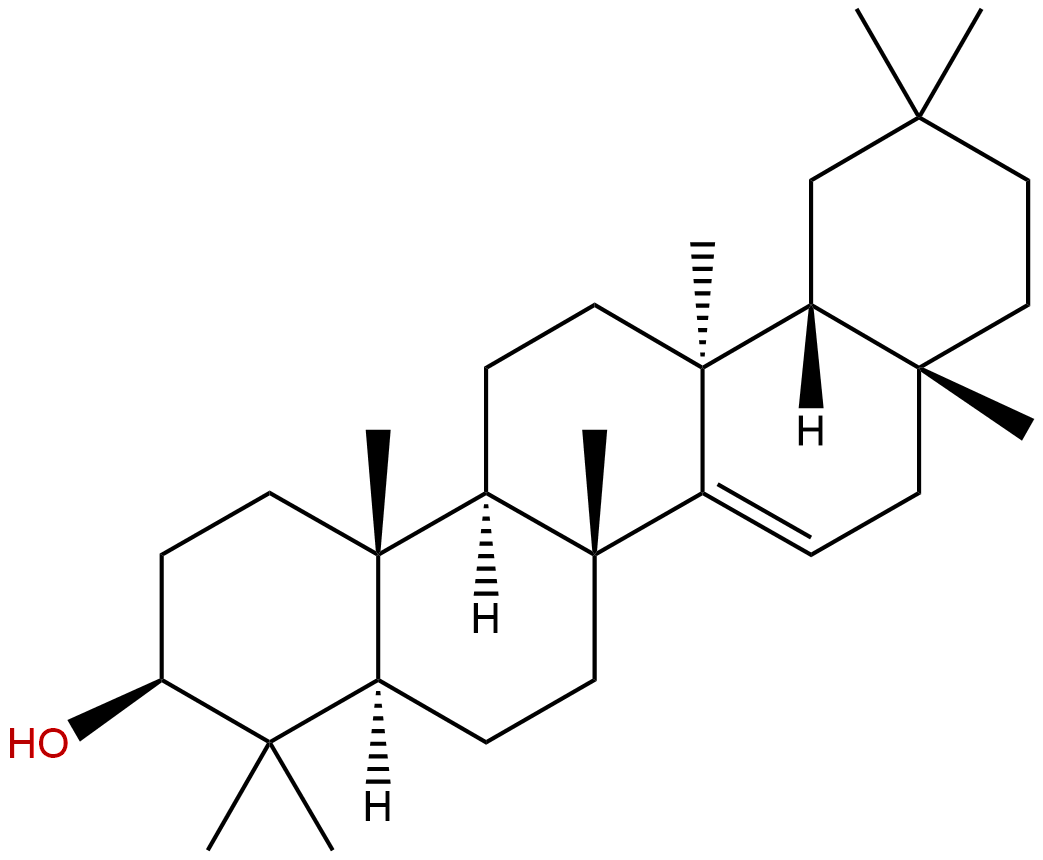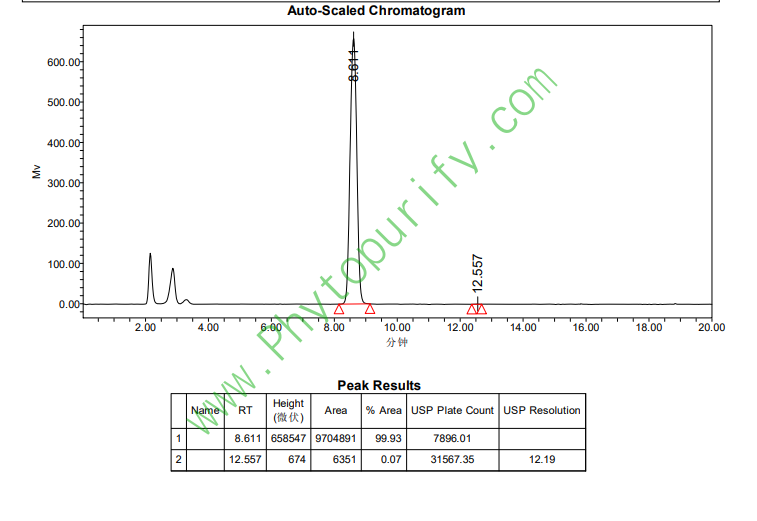
TaraxerolCAS No.:127-22-0
|
||||||||||
 |
|
|
||||||||

| Catalogue No.: | BP1365 |
| Formula: | C30H50O |
| Mol Weight: | 426.729 |
Product name: Taraxerol
Synonym name: Skimmiol; Alnulin
Catalogue No.: BP1365
Cas No.: 127-22-0
Formula: C30H50O
Mol Weight: 426.729
Botanical Source: Taraxacum officinale (dandelion), Alnus spp., Skimmia japonica, Rhododendron spp., Euphorbia spp. and other plants. Rather widely distributed. Also the lichen Pertusaria ophthalmiza (poss. not a genuine lichen constit.)
Physical Description: Powder
Type of Compound: Triterpenoids
Purity: 95%~99%
Analysis Method: HPLC-DAD or/and HPLC-ELSD
Identification Method: Mass, NMR
Packing: Brown vial or HDPE plastic bottle
Storage: Store in a well closed container, protected from air and light. Put into refrigerate or freeze for long term storage.
Whenever possible, you should prepare and use solutions on the same day. However, if you need to make up stock solutions in advance, we recommend that you store the solution as aliquots in tightly sealed vials at -20℃. Generally, these will be useable for up to two weeks.
The product could be supplied from milligrams to grams, up to kilograms
Inquire for bulk scale.
Descriptions:
Taraxerol, a triterpenoid compound, has potent anti-inflammatory effects,it downregulates the expression of proinflammatory mediators in macrophages by interfering with the activation of TAK1 and Akt, thus preventing NF-κB activation. [1]
Taraxerol can produce triterpenoid anti-cancer compound in Agrobacterium-transformed root cultures of butterfly pea (Clitoria ternatea L.).[2]
Taraxerol can be used as a lipid biomarker for mangrove input to the SE Atlantic, the proxy-environment relations for taraxerol and Rhizophora pollen down-core show that increased taraxerol and Rhizophora pollen abundances occur during transgressions and periods with a humid climate, these environmental changes modify the coastal erosion and sedimentation patterns, enhancing the extent of the mangrove ecosystem and/or the transport of mangrove organic matter offshore.[3]
Taraxerol has inhibitory effects on AGS cell growth through inducing G2/M arrest and promotion of cell apoptosis, taraxeryl acetate has less effect on cell cycle arrest and apoptosis of AGS cells than taraxerol.[4]
References:
[1] Yao X, Li G, Bai Q, et al. Int Immunopharmacol, 2013, 15(2):316–24.
[2] Swain S S, Rout K K, Chand P K. Appl Biochem Biotech, 2012, 168(3):487-503.
[3] Versteegh G J M, Schefu? E, Dupont L, et al. Geochim Cosmochim Ac, 2004, 68(3):411-22.
[4] Tan B, Shi H L, Ji G, et al. Journal of Chinese Integrative Medicine, 2011, 32(6):1278-84.
[5] Kumar V, Mukherjee K, Kumar S, et al. Phytochem Anal, 2008, 19(19):244-50.
HPLC of Taraxerol
